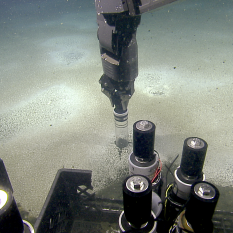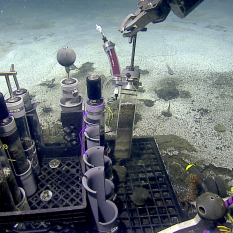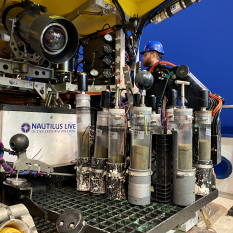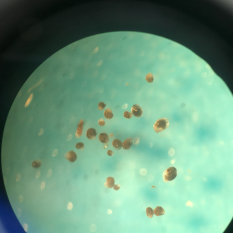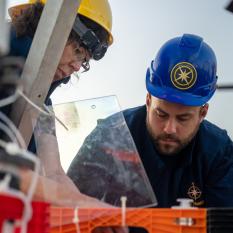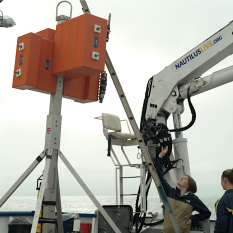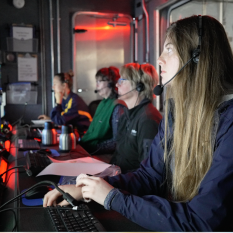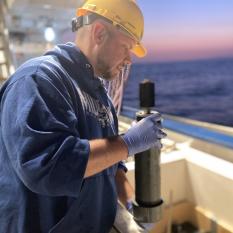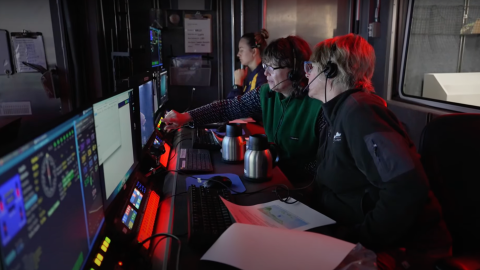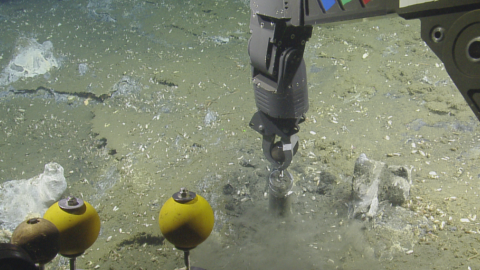Low Oxygen Adaptation and the Chloroplast Conundrum: An Investigation of Santa Barbara Basin
Led by Dr. Joan Bernhard of Woods Hole Oceanographic Institution and supported by NASA, the team set out to investigate a naturally anoxic seafloor basin to better understand how life adapts to extreme conditions. The Santa Barbara Basin is a natural bowl in the seafloor with high edges like a bathtub. This isolation limits the mixing of seawater in this area and hypoxic (near-zero oxygen) and anoxic (no-oxygen) concentrations are common here. Living within the sediments, foraminifera, tiny shell-forming protists, survive and thrive with unique adaptations in their metabolism to accommodate their seemingly inhospitable home.
Previous research by Dr. Bernhard revealed that although living far below the sunlit zone, certain forams (short for foraminifera) have captured chloroplasts in their cell bodies, a phenomenon known as “kleptoplasty”. Chloroplasts are the organelle in plankton and plants that harness sunlight to create sugars through photosynthesis. In this kleptoplasty (stealing) process, chloroplasts are integrated into the forams’ cells but not digested like food. Many scientific questions remain such as: Do these chloroplasts gather sunlight although they live over 500m deep?; How are chloroplasts helpful in dark ocean depths?; How did such an adaptation evolve to function in zero oxygen concentrations?; and How are chloroplasts captured by protists on the seafloor? In three days aboard E/V Nautilus, the team collected 99 samples that will help answer some of these mysteries regarding the chloroplast conundrum.
Read more about Dr. Bernhard's work at Woods Hole Oceanographic Institution.
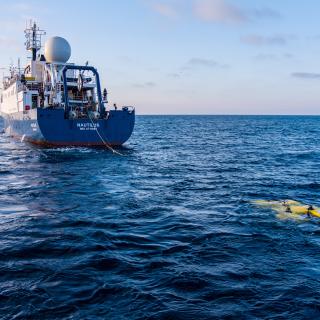
Santa Barbara Basin & West Coast EEZ Mapping
Launching our 2021 E/V Nautilus season, researchers will spend two days exploring oxygen minimum zones off the coast of southern California and seven days conducting seafloor mapping within the traditional and modern lands and waters of the Tongva, Kizh, and Chumash peoples.
